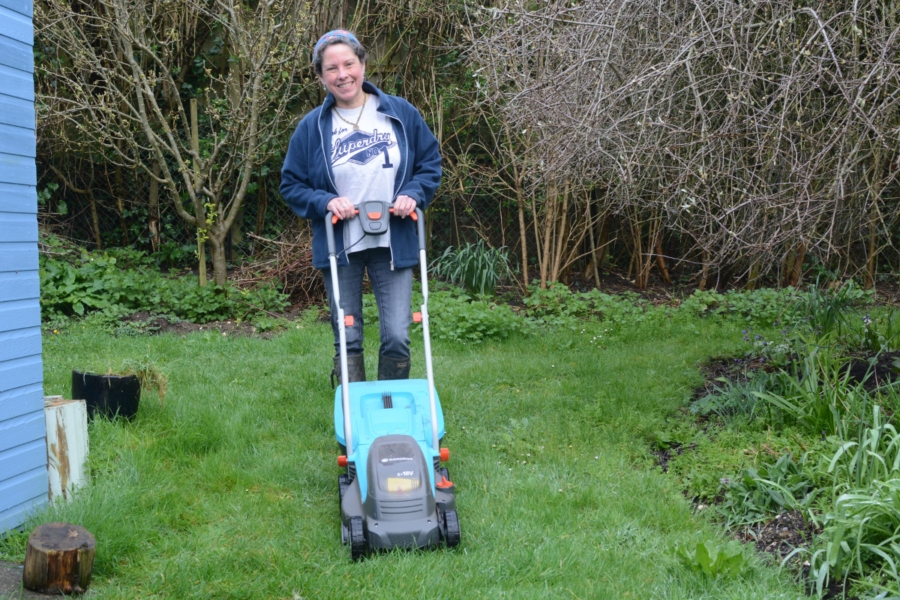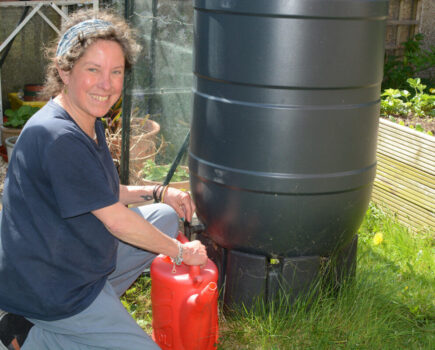A few simple steps make all the difference, says Ruth
After months of seemingly incessant rain, it’s hardly surprising that for many of us, our lawns are resembling the end result of the Battle of Bosworth Field. We live at the top of a hill and our soil is free-draining and chalky and even our grass is looking the worse for wear so I feel for gardeners who have to contend with heavy clay soils in low-lying areas.
But now the weather is starting to get warmer and drier, so we can start repairing winter’s damage and getting our lawns ready for summer. However, if your ground is still saturated or there are still patches of standing water, stay off until they dry, because walking on them will further compact the soil and damage the grass, creating growing room for weeds and moss.
Once you can move onto the lawn, rake over the grass to remove the ‘thatch’, the dead plant material and moss. Add it to the compost heap or hang it in bird feeders for garden birds to collect for their nests. Then you can aerate the ground using a garden fork, special aerating machine, or those clever shoes with spiked soles.
Now that grass is growing fast you can increase your mowing regime, maybe cutting the lawn every 7-10 days if you are after a neat sward. If so, start with the blades set high to avoid scuffing the soil and gradually lowering them as the spring progresses.

We have a few mossy patches and I combat them with a range of organic products by Mo Bacter that are safe for children, pets and wildlife. One product effectively removes the moss without leaving black marks caused by many moss killers, and feeds the soil creating a healthier environment where stronger grass can grow.There are also follow-on products that feed the soil and nourish the grass, and all are recommended by the RHS.
If you feel a need to feed your lawn – healthy grass doesn’t usually require fertiliser – now is the time to do so, using a nitrogen-rich feed to promote leafy growth. Choose a day when the grass is damp, follow the directions carefully and don’t overfeed.
Top lawn jobs
Create healthy turf

1. Remove dead material using a rake. This allows air, light and rain to get to the roots and promote thick and healthy growth.

2. Punch holes in very compacted areas to loosen the soil and improve drainage. Make the holes a few inches apart over the whole area.

3. I prefer not to use weed killer on the lawn and I find my puller invaluable for getting rid of stubborn perennial weeds.

4. Edging the lawn with a half-moon tool or by digging an edge around borders is the quickest way to create a neater look to the whole garden.
Find more tips, advice and articles like this at the Amateur Gardening website. Subscribe to Amateur Gardening magazine now.





